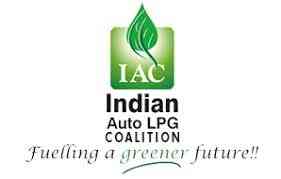Auto LPG is proven and could play a key role
Need to consider well-to-wheel emissions for Auto LPG

New Delhi, January 28, 2022: There has been a periodic spotlight on the electric vehicles in the country envisaging a perfect future when so-called ‘clean’ electric vehicles would replace the heavily polluting carbon-based popular fuels such as petrol and diesel in our modes of transport and mobility. Days ago, the government announced another allocation of Rs 1,000 crore for the development and installation of charging infrastructure under the phase II of Faster Adoption and Manufacturing of Hybrid and Electric Vehicle (FAME) scheme. Sometime in the middle of the year, the government had extended the second phase of FAME by two years until March 2024.
However, amidst this sustained flurry of announcements on electric vehicles, questions continue to arise as to why this special attention is reserved only for electric vehicles – a project which is not only riddled with huge infrastructure and budgetary costs but also still appears a long way from reality on the ground at least in the short-to-middle term– while overlooking auto LPG, an alternative fuel filled with more promise in terms of infrastructure requirement, the costs of transition and even environment.
“While we certainly welcome the long-term focus of government to set the ball rolling for a minimally carbon-intensive vehicular fuel policy and of course, the tilt towards electric vehicles would be a part of that vision, it is totally baffling that the government continues to ignore the immediate potential that auto LPG holds out in all respects as compared to electric mobility.
Talking of infrastructure, the government’s plans to set up 4500 EV charging stations across the country is woefully inadequate since there is a need for at least 4 lakh charging stations, 100-times that target, in order to meet its own target of having 2 million EVs on the roads by 2026. In contrast, auto LPG already has almost 1500 stations for refilling across 600 cities in the country. And that too without almost any government support. Further, India’s import dependence on lithium-ion batteries, without which EVs is an absolute non-starter, is unlikely to ease immediately even with the government’s full policy push. With China dominating the world market for raw material, it becomes even more complicated and unpredictable. On the other hand, thanks to the drive for household consumption of LPG, an extensive infrastructure exists in the country from before. With 2.5 million auto LPG vehicles already running on Indian roads, it makes almost perfect sense to give an instant policy boost to this fuel, said Mr. Suyash Gupta, Director General, Indian Auto LPG Coalition.
“Cost-wise, instead of buying expensive EVs, it becomes far easier for a consumer to get their existing vehicles retrofitted with LPG conversion kits. All that the government needs to do is to ease the Type Approval norms governing the retro-fitment of LPG/CNG conversion kits and bring them in line with the European norms. Currently, the Indian rule to renew Type approvals for auto LPG conversion kits every three years is hugely cost-prohibitive as well as a disincentive and a deterrent from both manufacturer and consumer standpoints. The government must also consider shifting the GST slabs of conversion kits from 28 to 18% and of auto LPG from 18% to 5% with a view to stimulate demand on the ground. In fact, even environmentally speaking, electric vehicles are not really as environmentally friendly as they are being made to be especially in the immediate term. Almost 60% of electricity in the country is still produced by carbon-emitting fossil fuel-based sources. On the other hand, auto LPG has a zero global warming potential with negligible emissions of nitrogen oxides and particulate matter,” further said Mr. Gupta.


 cityairnews
cityairnews 







